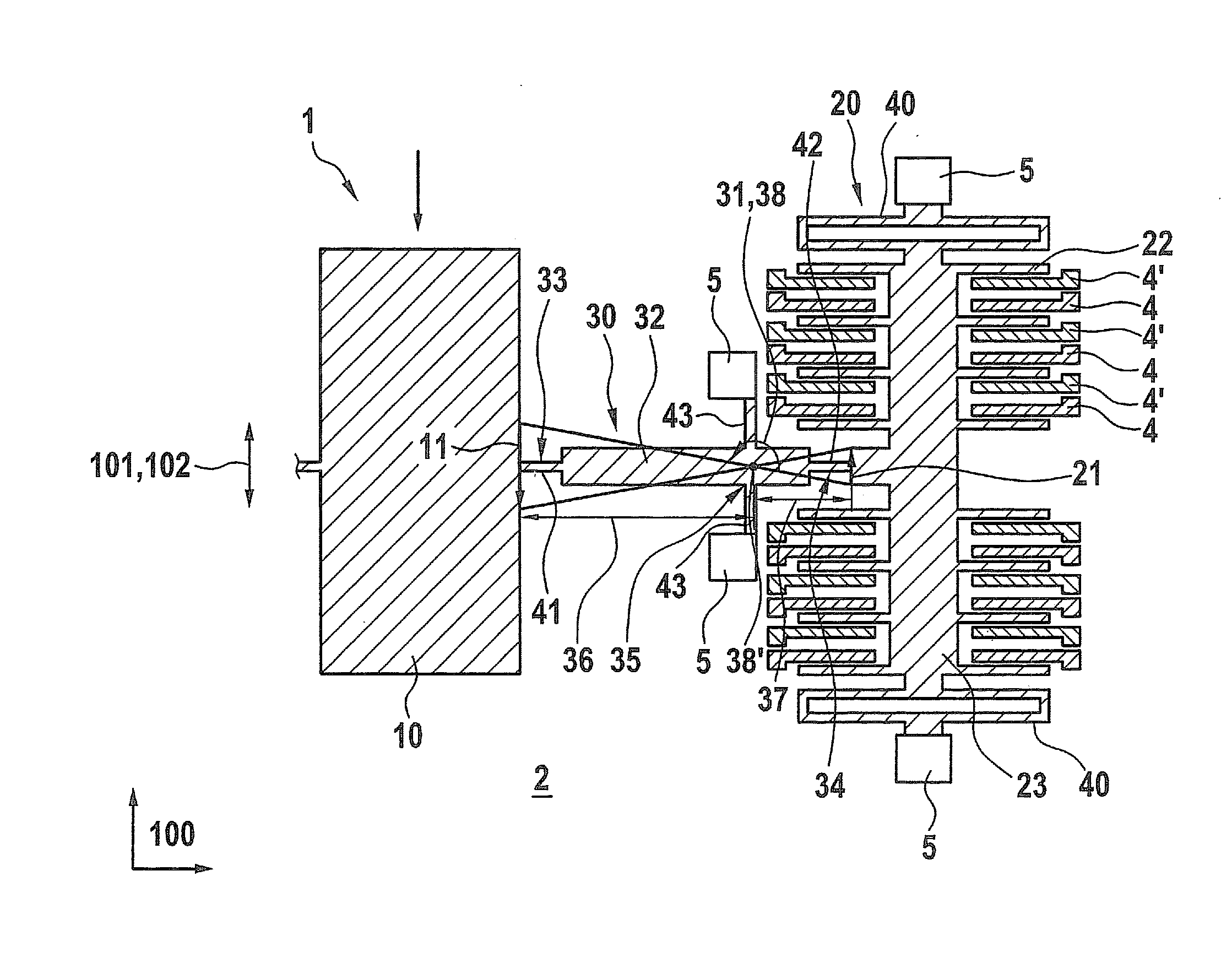Acceleration sensor and method for operating an acceleration sensor
- Summary
- Abstract
- Description
- Claims
- Application Information
AI Technical Summary
Benefits of technology
Problems solved by technology
Method used
Image
Examples
Embodiment Construction
[0040]In the various figures, identical parts have been provided with the same reference symbols and are therefore usually labeled or mentioned only once.
[0041]FIG. 1 shows a schematic view of an acceleration sensor 1 according to a first specific embodiment of the present invention. Acceleration sensor 1 includes, for example, a MEMS (microelectro mechanical system) component having a substrate 2 made of a semiconductor material, preferably silicon. Furthermore, acceleration sensor 1 has a seismic mass 10 and a detection unit 20. Substrate 2 preferably has been patterned appropriately in a standard semiconductor production process, particularly within the scope of a lithography, etching, deposition and / or bonding method, so as to develop seismic mass 10, as well as detection unit 20. Seismic mass 10 is deflectable with respect to substrate 2 within the scope of a deflection motion 11. Deflection motion 11 takes place along a deflection direction 101, which extends parallel to a mai...
PUM
 Login to View More
Login to View More Abstract
Description
Claims
Application Information
 Login to View More
Login to View More - R&D
- Intellectual Property
- Life Sciences
- Materials
- Tech Scout
- Unparalleled Data Quality
- Higher Quality Content
- 60% Fewer Hallucinations
Browse by: Latest US Patents, China's latest patents, Technical Efficacy Thesaurus, Application Domain, Technology Topic, Popular Technical Reports.
© 2025 PatSnap. All rights reserved.Legal|Privacy policy|Modern Slavery Act Transparency Statement|Sitemap|About US| Contact US: help@patsnap.com



